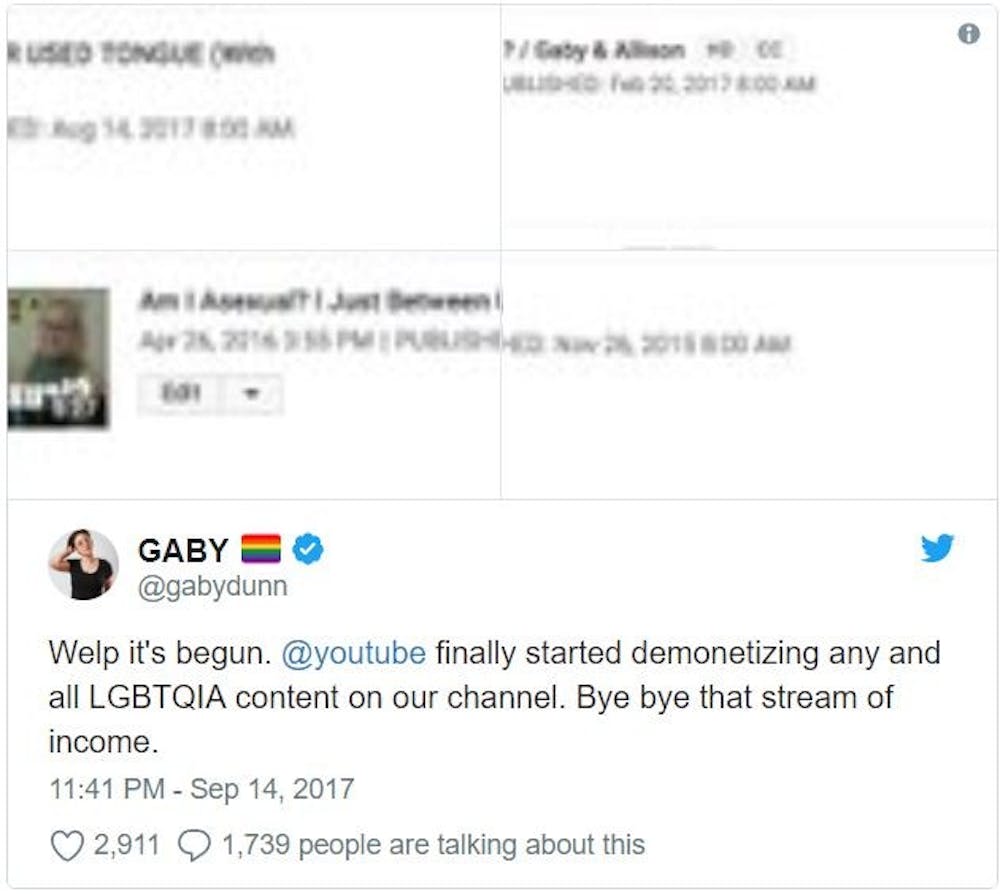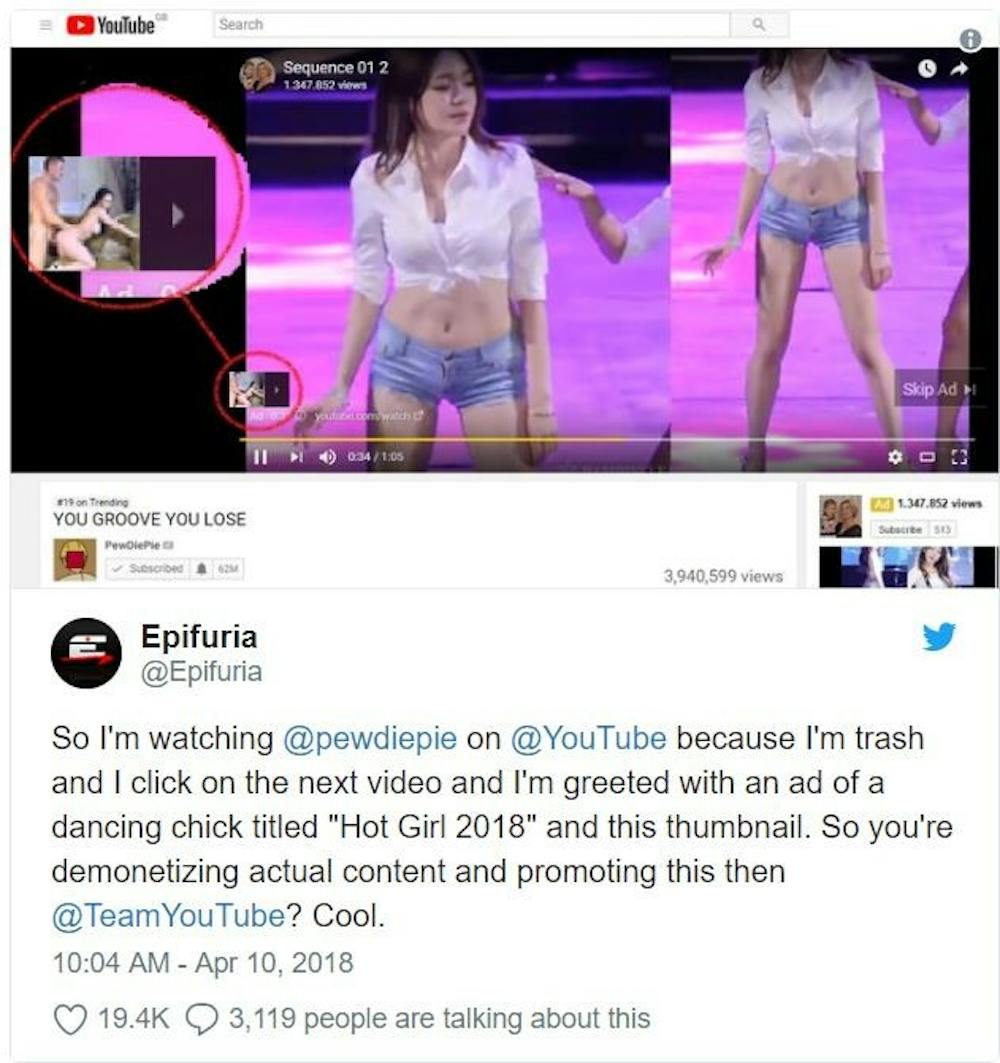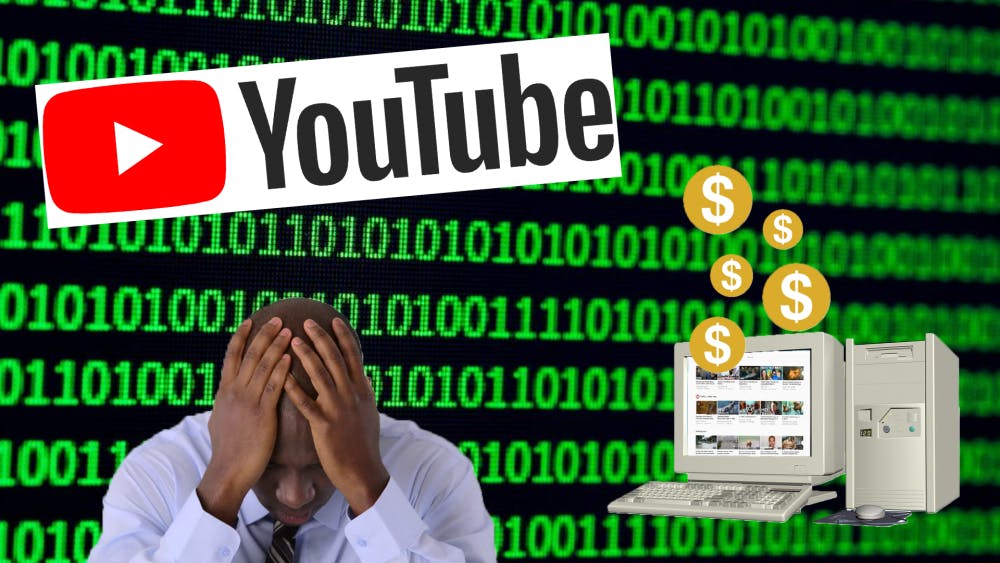To be frank, YouTube is a mess.
In early 2017, YouTube introduced new ad policies which involved demonetization of many smaller channels.
So what does this mean? On the surface, the ad policy looks pretty ok. However; ultimately this has resulted in smaller channels being demonetized as well as channels featuring LGBTQ+ creators or creators who discuss controversial topics have since been demonetized.
Demonetization occurs when YouTube decides that the content of the channel does not coincide with what they classify as “ad-friendly” content. They then remove ads from that video and the channel no longer brings in ad revenue.

Image from AdNews
This censors creators. They are still allowed to upload whatever videos they want, but for a lot of people this is their job. This means that when the videos they put their whole lives into are not making money, their careers hault abruptly.
For example, YouTube creator Kendall Rae had her content demonetized after the implementation of the new YouTube ad policy. Kendall frequently expresses her political views. She also makes mainly videos about conspiracy theories and missing people. YouTube deemed her content to be not ad-friendly.
Kendall Made this video about the censorship of her content and the struggles that she has had while trying to still keep afloat financially. For Kendall, this also happened while she and her husband were trying to buy a house. This is a very real possibility for all content creators on YouTube.
YouTube creator Gaby Dunn also tweeted about experiencing demonetization on her LGBTQ+ related content.

So not only are smaller channels being censored, but so are LGBTQ+ channels that are essential to the LGBTQ+ community.
YouTube was originally a platform for people to make their content however they wanted. Now they are being demonetized for it. This is a type of censorship because people who do this for a living are frequently forced to change their content for the sake of keeping it ad-friendly.
So what is it that has caused such a sudden change in the YouTube ad policy? Ultimately, brands like McDonalds, Toyota and AT&T (along with countless others) pulling their ads from the platform.
According to Business Insider the companies who pulled ads did so because of extremist content posted by the group National Action which is an alt-right group that was declared to be a terrorist organization.

Image from Renegade Tribune
After the mass pull of ads, YouTube lost revenue that amounted to hundreds of millions of dollars. In response they introduced their new, stricter ad policies.
While it sounds great that they would want to make it harder to openly be a neo-nazi on their platform, the ad policy has ultimately hurt the freedom of creators on the platform. There are many other ways they could have prevented the promotion of neo-nazism that did not involve the censorship of smaller channels and LGBTQ+ creators.
YouTube was also recently under fire for porn ads that were being presented on some of their videos. This is ironic considering the intense censorship that creators on the platform experience.

It is time to consider why YouTube handled this situation the way they did. How can they deem thousands of channels to be inappropriate while also offering pornography as an ad for a video? Why wouldn’t they just censor the extremist channels and move on with their day?
Money is the only thing that comes to mind. They were so desperate to regain the companies that left them that they did not consider their creators, the people who depend on them. It was just a scramble to try to save their money.
Sources: YouTube Help, Byte, YouTube, Twitter, Business Insider, Gizmodo
Images: AdNews, Twitter, Renegade Tribune
For more entertainment, tech, and pop culture related content, visit us at Byte BSU!




















